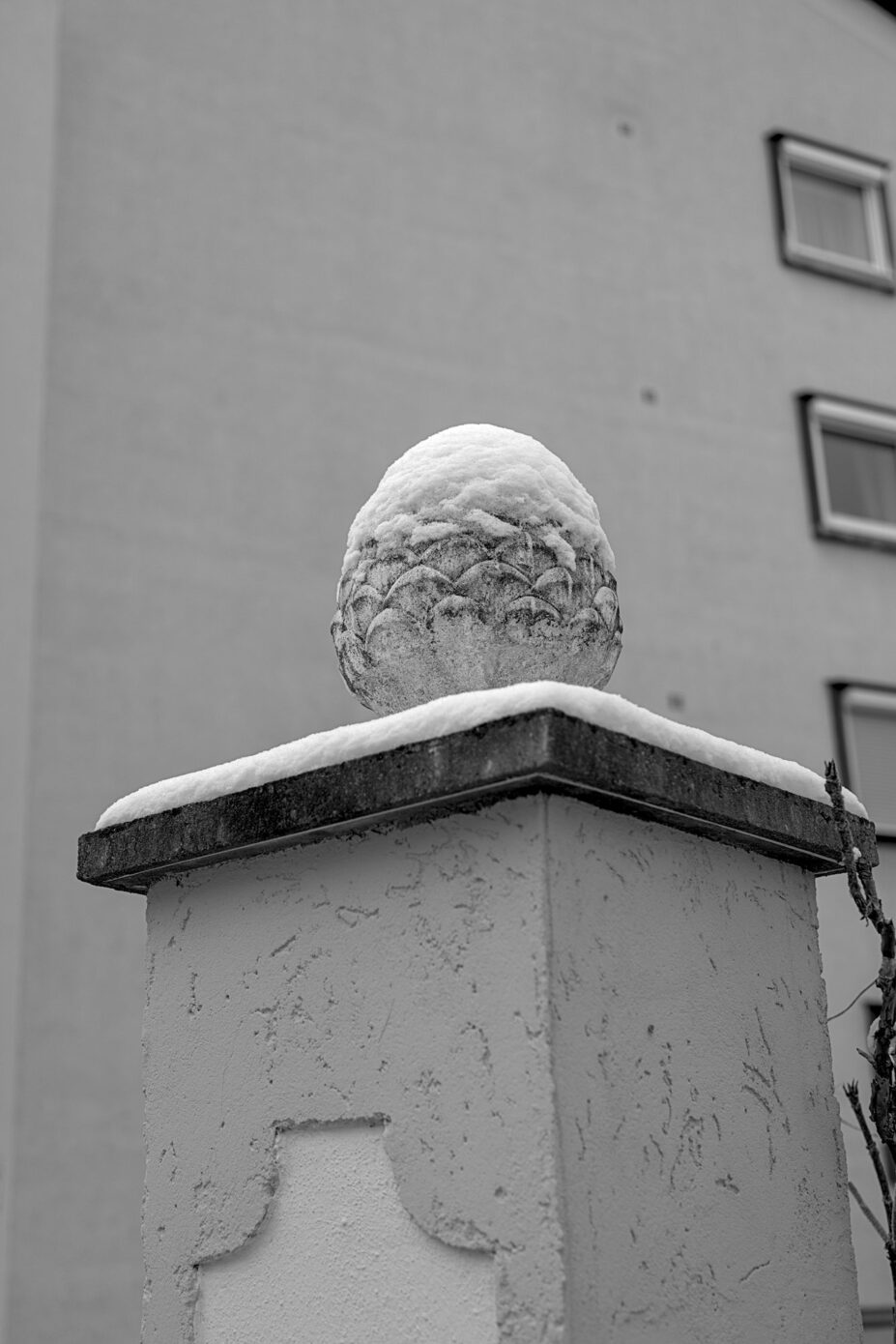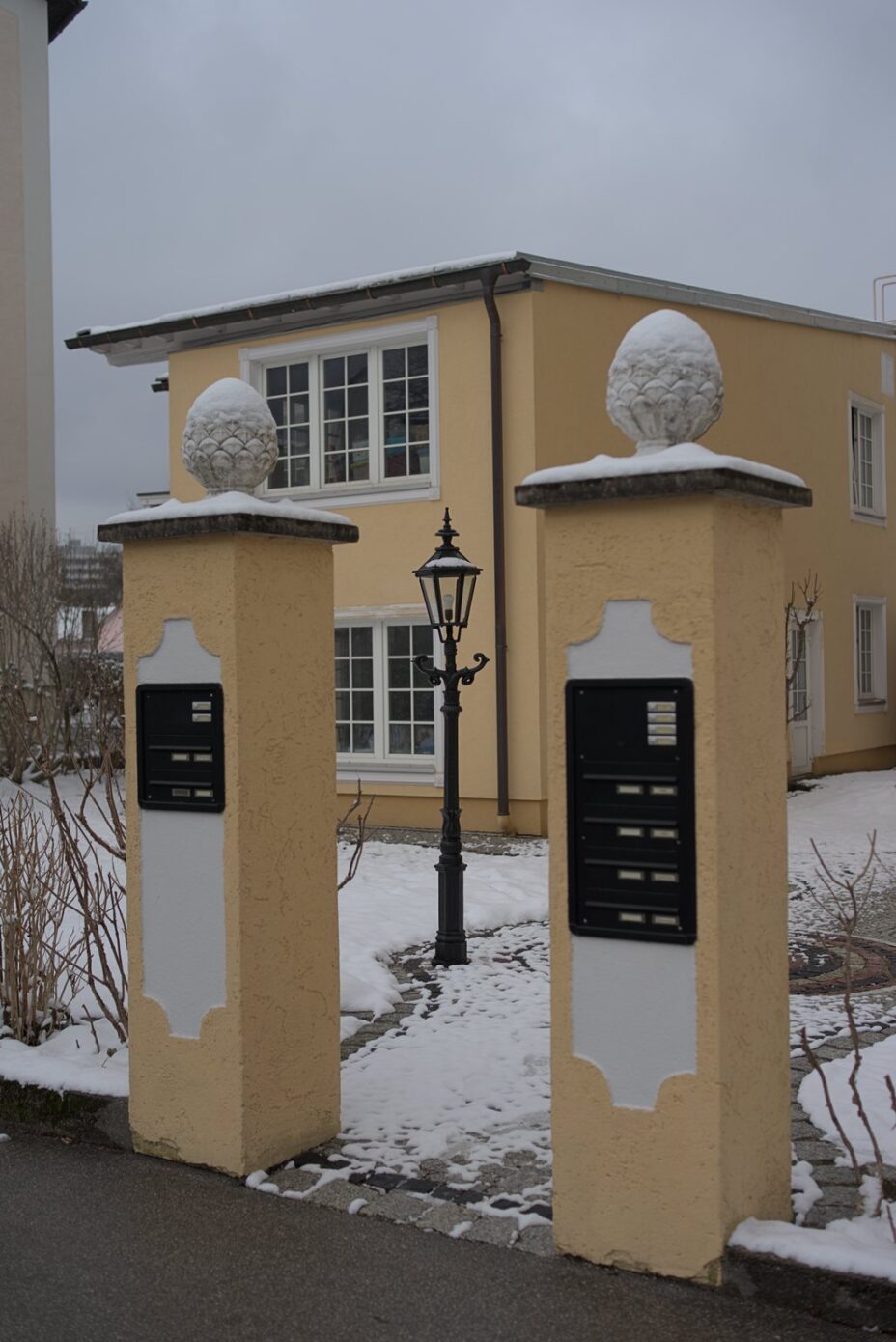
(from wikipedia/deepl)
Pine cones made from stone and decorated with net patterns, possibly with a phallic symbolic reference, come from Portuguese megalithic sites from the beginning of the 3rd millennium BC (e.g. Martinho de Sintra, Carenque-Bautas).
Later, the cone was a field mark of a Roman legion that took part in a conquering campaign to Rhaetia in 15 BC. Their camp Augusta Vindelicum at the confluence of the Lech and Wertach rivers is considered to be the nucleus of today’s city of Augsburg, in whose coat of arms the pine nut can still be found (“Stadtpyr”).
The term “pyr” apparently goes back to the Latin word for “pear” (pirum). In addition to its use as a military field symbol and city emblem, the pyr nut adorned countless Roman pillar tombs in Rhaetia as a symbol of fertility and immortality. In this context it goes back to the Egyptian Isis cult as well as to the cults of Dionysus and Kybele. Christianity interprets the pine tree as a tree of life and takes the pine cone as a sign of resurrection and immortality.
—-
While Romans have settled in the valley of my hometown, as far as I know they’ve not used pine cones as their field marks here. Current home/garden improvement culture (vulgo DIY stores) however brought a mix of all-time-best decoration.
But already in the 17th century, there were oven tiles with this symbol. So maybe it should be regarded as endemic then.
